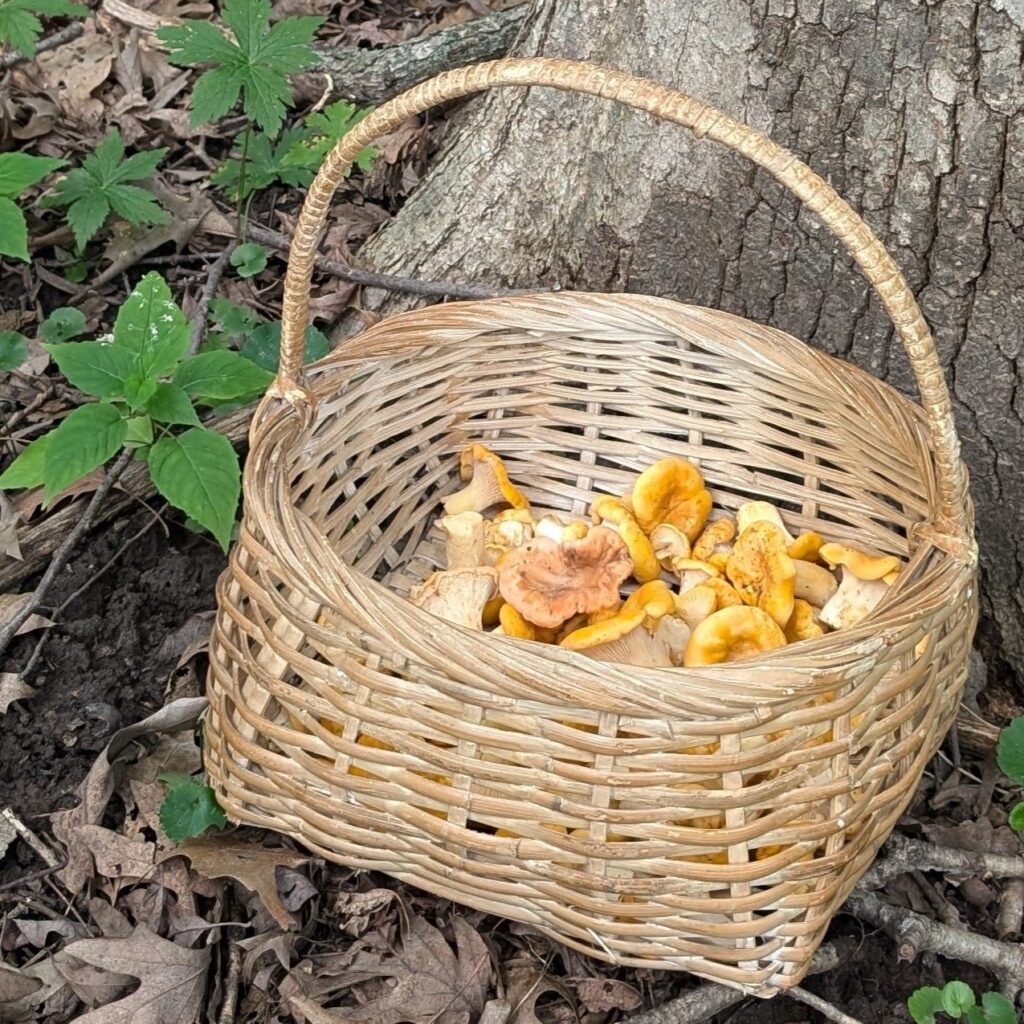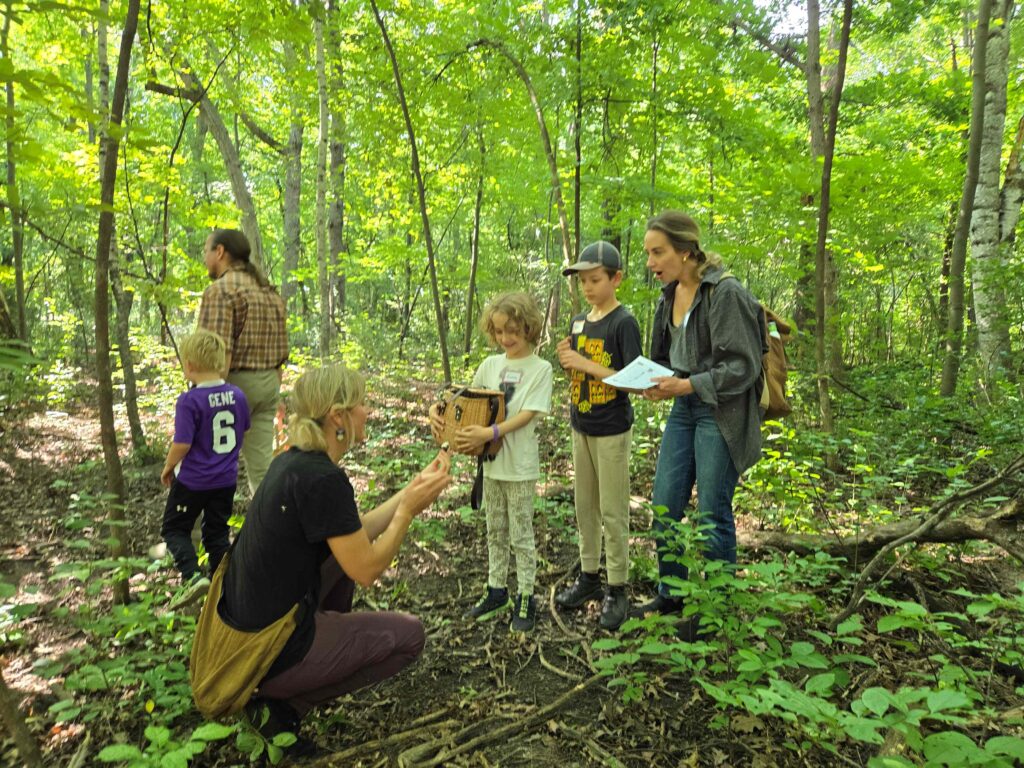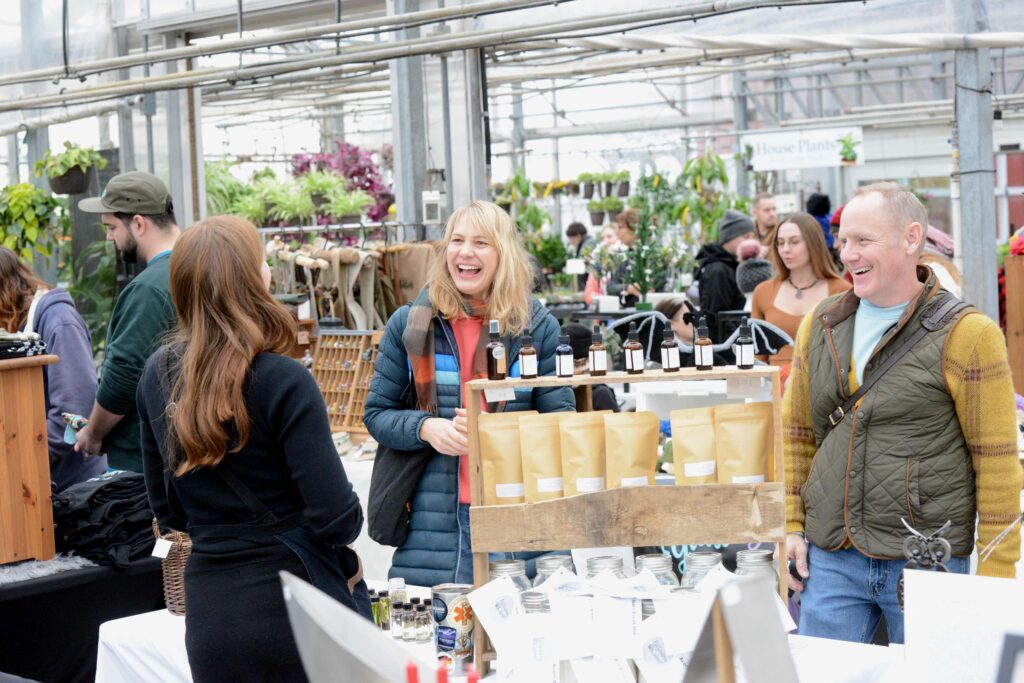This is a copy of my Summer 2025 Newsletter. To get the newsletter emailed to you, sign up here.
Morel season was kind of a bust this year. No, actually I’d say it was brutal. As if morels aren’t hard enough to find in a normal year, the lack of rain and intense heat squashed my dreams of what started out looking like an epic year for morels. Don’t get me wrong, I found morels. But it was work. And I wasn’t alone. I got message after message from people wondering where all the morels were. Well… eventually I found them!
I was on new property. Private land that I was pumped to get permission to hunt on. I started out and found TONS of PERFECT trees. They SHOULD HAVE been there. But they weren’t. Just like everywhere else this year. I eventually found a few here and there but it was getting dark and I hadn’t had much luck in a while so I decided to call ‘er quits and head back. I was at the bottom of a ravine and spotted a huge dead Slippery Elm at the top of the hill (of course). It was out of my way but I couldn’t not look. I clambered up the hill and as I was getting closer, I thought my eyes were going buggy.
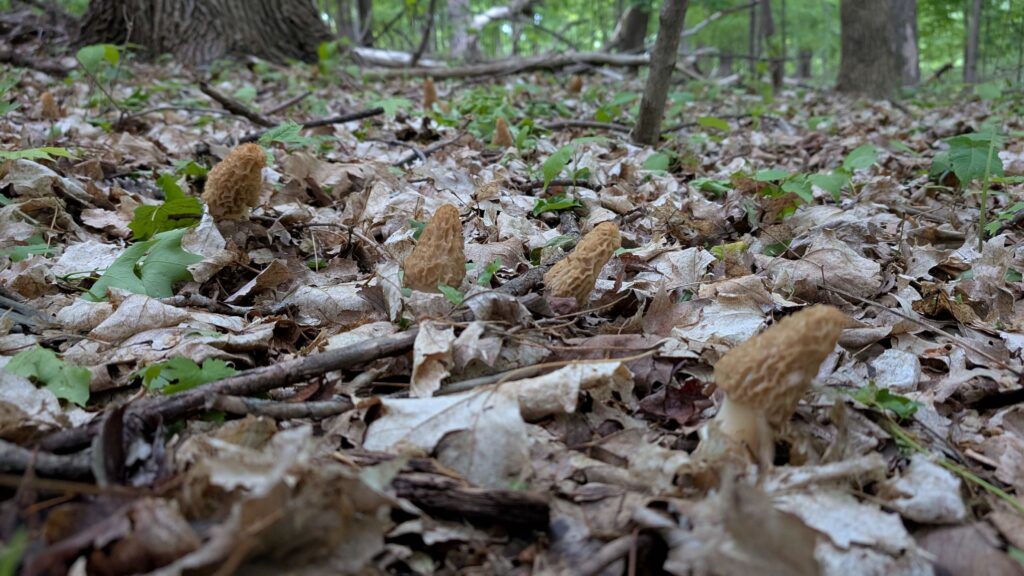
It was that golden hour where it’s still light but hard to see detail so I didn’t first register the slightly different shade of tan within the leaves as morels because I was so far from the tree I was headed for. Then I almost had to shake my head. Was I really seeing this? It was hard to stop taking pictures and videos and just pick. Some were easily 60-80 feet away from the tree. Scattered EVERYWHERE!
I honestly got choked up at one point. It eventually got so dark I had to quit picking and come back a couple days later. I lost track but counted about 140 beautiful morels around that one tree – just a hair under six pounds! Maybe nothing compared to some people, but a dream come true to others (including myself).
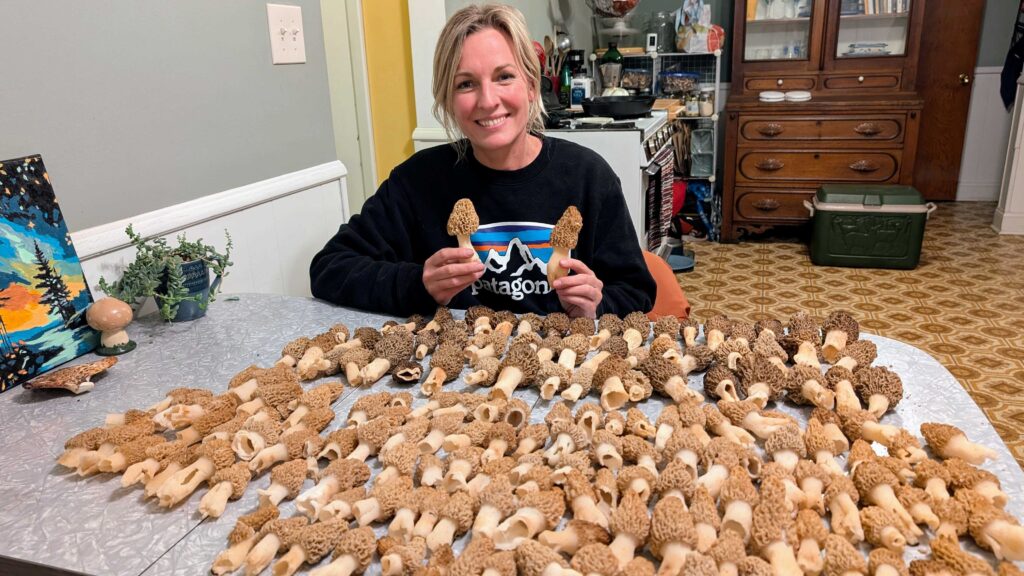
You just never know when the mother lode is around the corner and that anticipation is what makes mushroom hunting so exciting. IT. NEVER. GETS. OLD. No matter how many or how few mushrooms you know, or how many times you’ve found mushrooms in the past, the thrill of the hunt is real and something I never understood until I started mushroom hunting.
Join me this year whether you’re a newbie or an expert looking to meet other nature nerds. I swear foragers (and wanna-be foragers) are some of the greatest humans on the planet. I want to be friends with everyone that comes to my classes. If you’ve been on one of my hunts, you know what I’m talking about. And it’s nothing I am taking credit for… it’s people like YOU that are reading this article. Thank you to everyone that has ever been out with me, to those that I will eventually meet someday, and to those of you that just love mushrooms like I do. I love you all and I’m so happy to have people to share this obsession with.
Finding Forest Gold - Chanterelles
We sloshed through June with gobs of rain setting us up for a perfect start of the summer mushroom season. June is not typically a great month for edible mushrooms which is why I don’t schedule mushroom hunts in June, but now is the time to get in the woods and take a class with me! July is what I, and many other seasoned foragers, consider the start of the “real mushroom season” and chanterelles are one of the best mushrooms to look for.
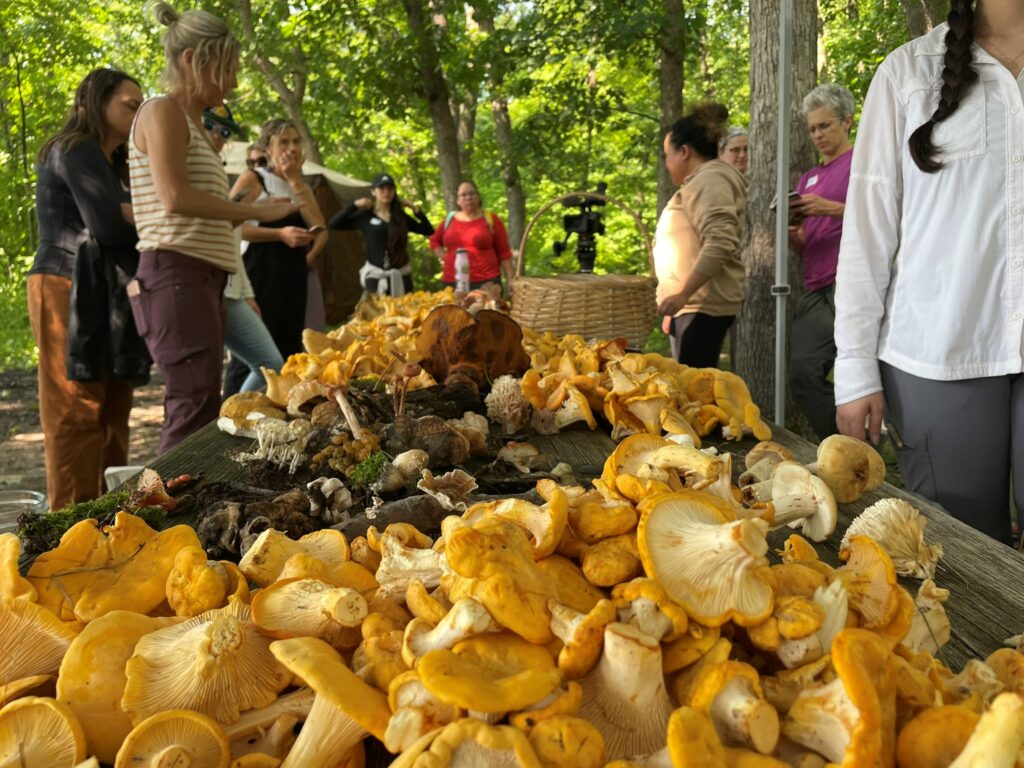
Where I’m from near Minneapolis, Minnesota, chanterelles grow at least the whole month of July, well into August, and they really love to grow around oak trees. If you’re not sure how to identify your oak trees very well, one trick I can offer you is to look for trees with the smooth patch fungus on the bark.
While chanterelles can grow around oaks in the red or white family, the smooth patch fungus just affects oaks in the white oak family (oaks with rounded tips are in the white oak family and pointy tips are the red oak family). Again, it doesn’t necessarily matter which kind of oak you are looking at for finding chanterelles, but at least you KNOW it’s an oak if you see that smooth patch fungus and you don’t have to look up at the leaves. As I always say in my mushroom hunting adventures, we are actually tree hunting. “Hunt for the trees, pick the mushrooms.”
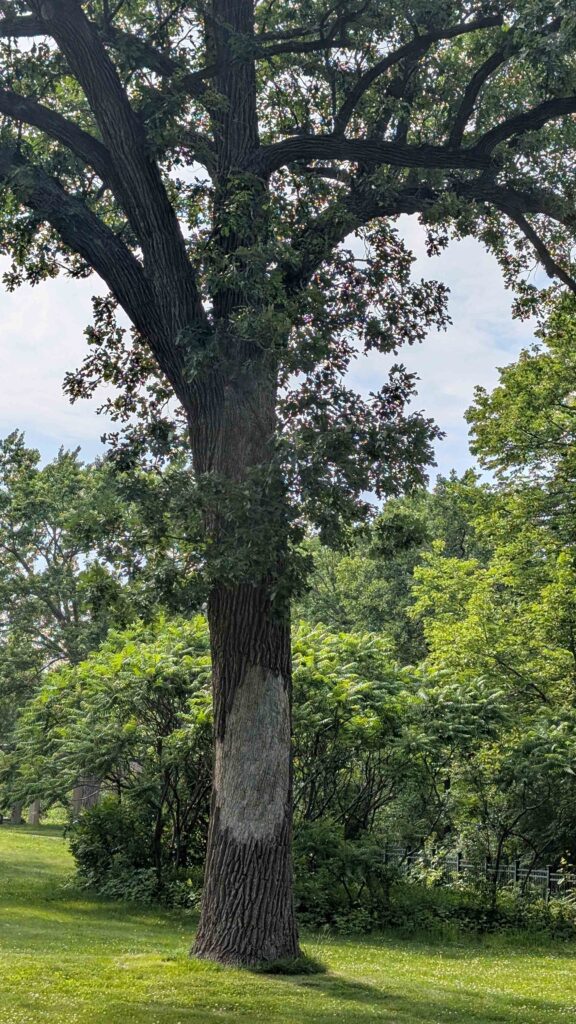
Even more specifically than looking around oak trees, they like to grow in grassy areas around oak trees. Not really lawn grass (although it’s possible), but what I call “forest grass.” That wispy tall grass (Pennsylvania sedge) that you can see in the picture below.
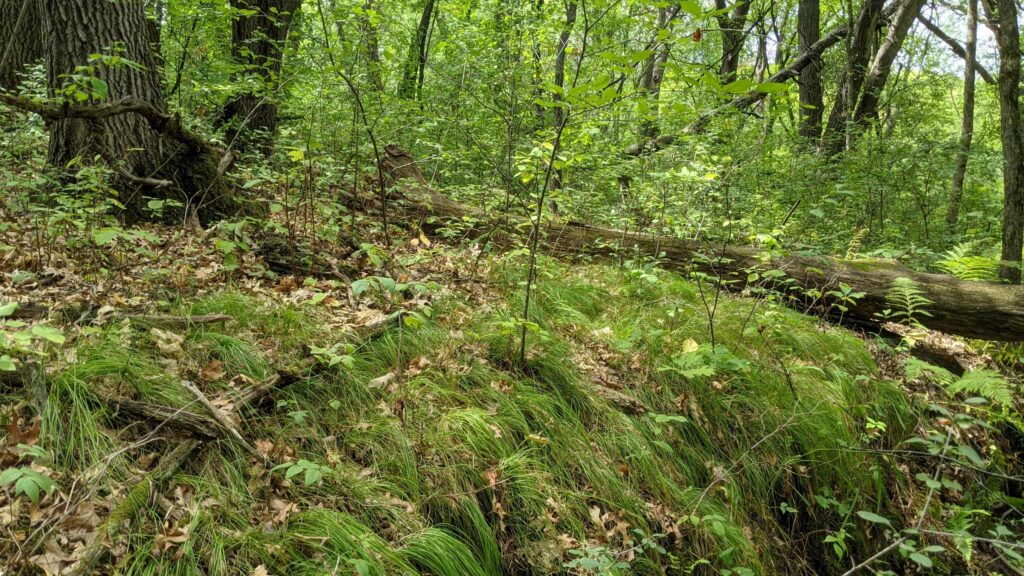
Along those same lines – another little tip is that your chance of finding mushrooms that grow on the ground, like chanterelles, is greatly diminished if there is no vegetation on the forest floor (like that forest grass, moss, or other herbaceous vegetation). This is often caused by invasive earthworms and it makes sense you won’t find many mushrooms because about 90% of plants have a symbiotic relationship with mushrooms (the mycelium of fungi gives plants nutrients, minerals and water while plants give mushrooms carbon in the form of carbohydrates). Although you can still find saprophytic mushrooms (those that grow on decaying matter, like dead trees) and parasitic mushrooms (those that harm and sometimes kill their host – like living trees).
The poisonous look-alike to the chanterelle – the Jack-O-Lantern – grows on wood, but sometimes that wood is buried appearing like it’s growing from the ground like the picture below.
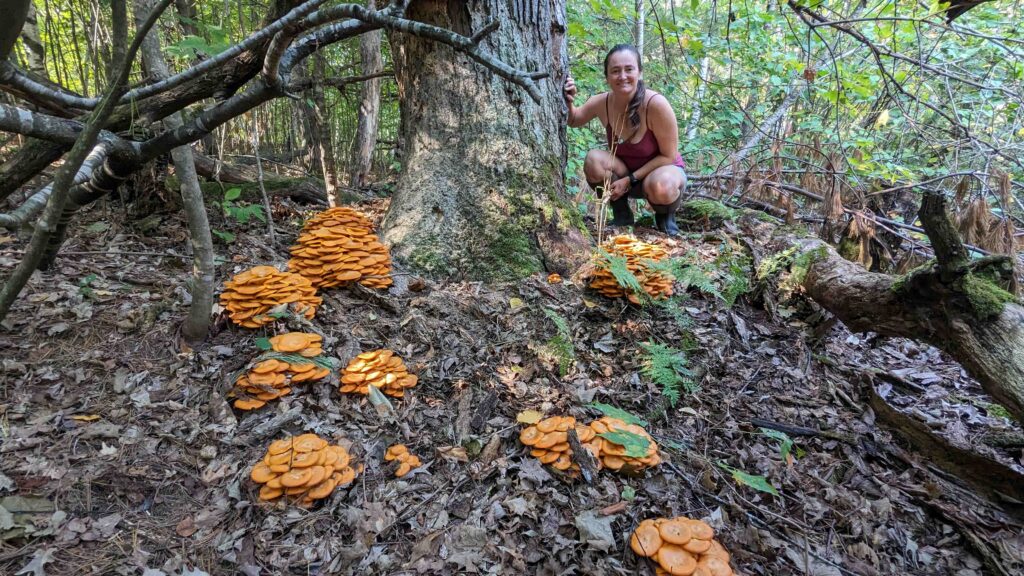
In other areas of the state and world, chanterelles will grow in different habitats. Head to northern MN and you’ll find chanterelles growing with pine trees.
Make sure you get familiar with the poisonous Jack-O-Lantern mushroom (Jacks). Jacks can be easily differentiated from chanterelles when you cut or tear one in half. Jacks will be orange inside while chanterelles will look like the color and texture of string cheese. Jacks are usually (but not always) growing in large clusters while chanterelles are more scattered around (but can be clustered slightly). And chanterelles have false gills, or folds in the skin, rather than true gills like the Jacks.
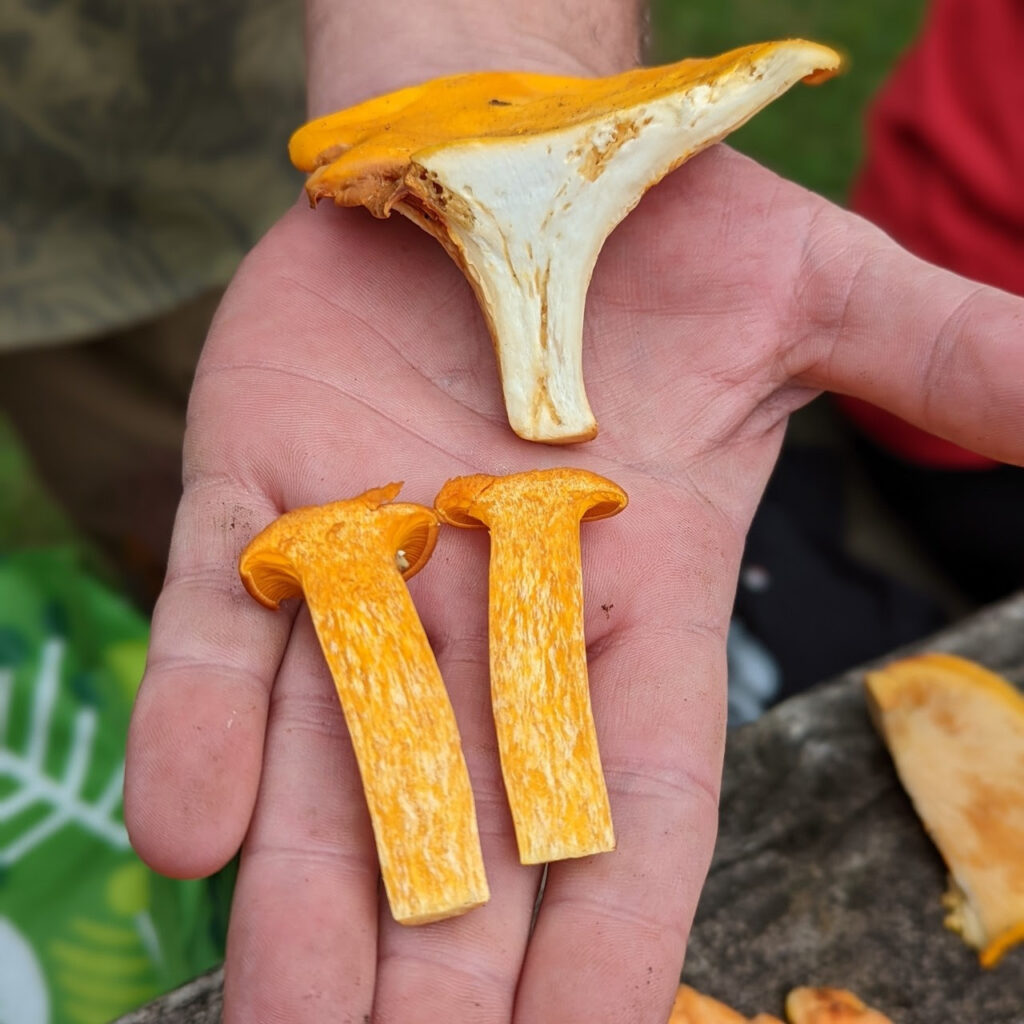
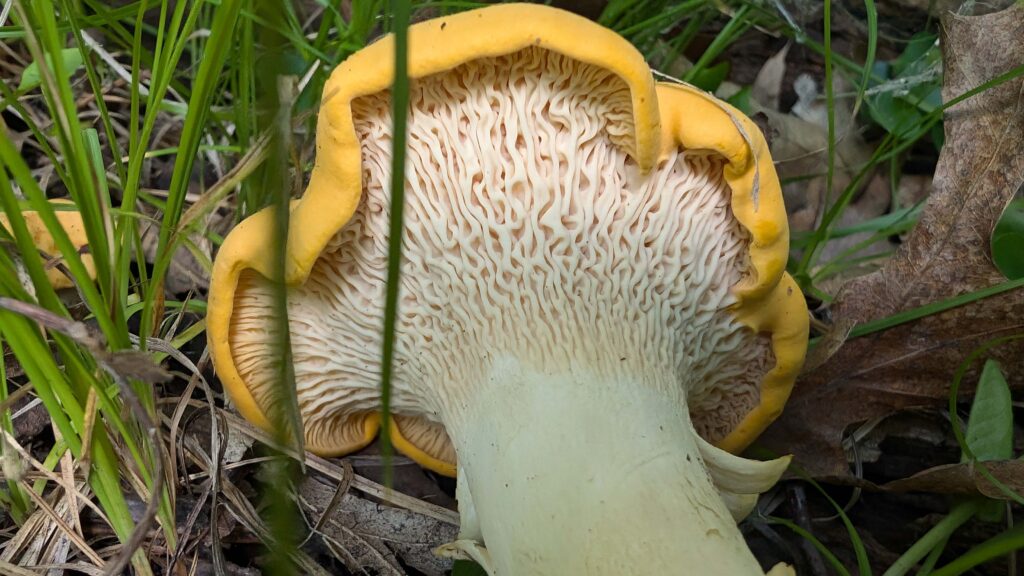
These are just things I’ve encountered when I’m out looking. You’ll find your own situations may differ in the forests you get to know. Almost nothing in the mushroom world is “always” or “never,” it’s usually “usually,” but occasionally “always” or “never.” Like you should ALWAYS know what you are eating before you consume it and NEVER trust an app as your only source of identification.
Wondering how you should cook up all those chanterelles you just found? You’ll get the same answer from me for most mushrooms – in your eggs! But that won’t use them all up that way. Get some inspiration from people that really know how to cook wild foods, like Hank Shaw or Forager Chef.
It’s best to enjoy your mushrooms fresh when possible, but chanterelles are one of those mushrooms that you can easily find “more than you can chew.” My go-to method for preserving them is by sautéing them in butter or oil until they are about half-way cooked, then vacuum seal and freeze. Dehydrating is not a great choice for this mushroom. Pickling is also a great option for this mushroom. Again – try my go to guys, Hank Shaw or Forager Chef, for some pickling recipes.
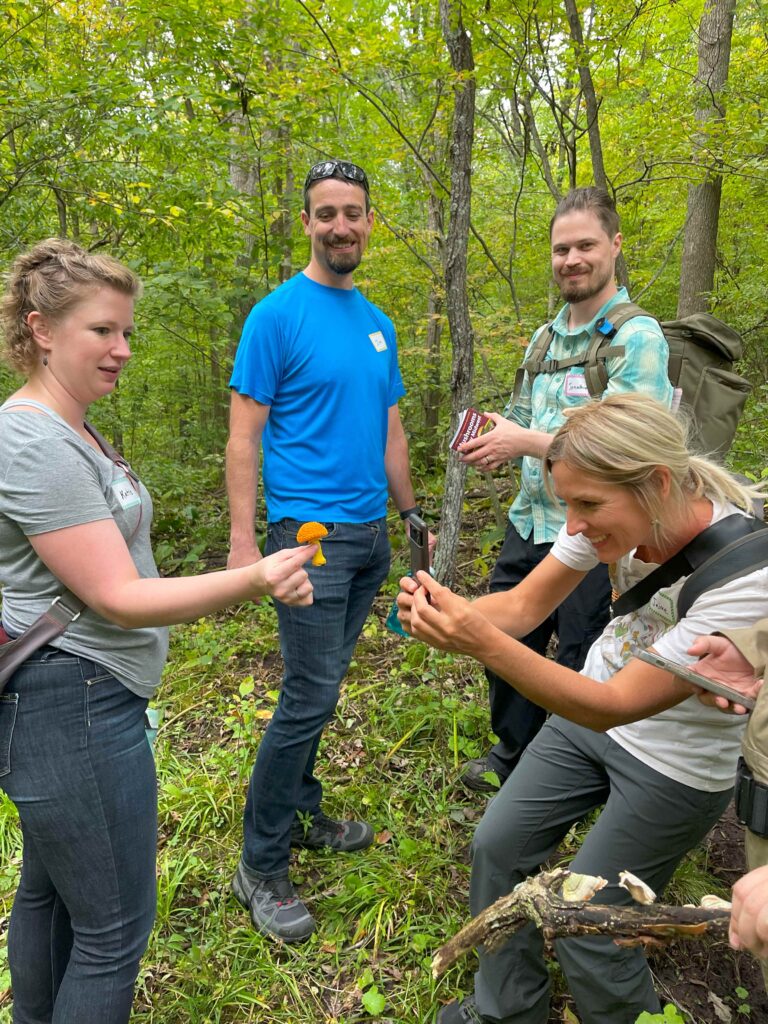
Interested in taking a class and learning more? I know people are relying more on apps and I’ll admit, a lot of times they are correct. But often they are not and I like to think I am more trust worthy than an app. If I don’t know a mushroom, I will tell you I don’t know it. I’m not going to just make up an answer and let you figure out if I was bluffing or not.
My classes and events focus on common, edible mushrooms that are in season. If you are interested in things like learning the scientific names of the small, non-edible mushrooms – I’m not the right fit for you.
Another thing my classes offer besides just an identification from a real and experienced human, is that you will better understand how to find them. If you are looking for a fun scavenger hunt-like adventure, meeting like-minded people, and spending time in nature looking for delicious food – I know you will have a fun and memorable day with me and your new, nature-loving friends. Maybe even the best day of your year!
Here are some fun opportunities for you. No experience is required – all you need is a desire to learn and an appreciation of nature.
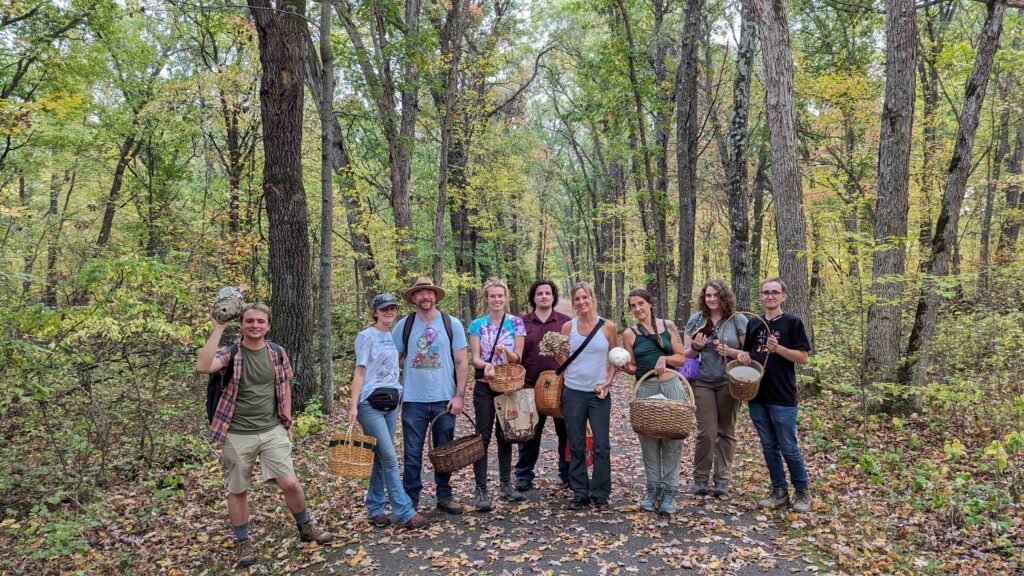
July 19 – Chicks Only!! Mushroom Hunt and Wild Mushroom Lunch
within 1 hour west of NW of Minneapolis
July 26 – Summer Foraging and Tasting
1 hour NE of Minneapolis in St. Croix Falls, WI
August 3 – Family Foraging
45 minutes north of Minneapolis
August 16 – Summertime Foraging
within 1 hour west of NW of Minneapolis
August 20 – Foraging Event for Kids
within one hour south of Minneapolis
August 23 – Private Hunt
Contact me for more info on private hunts
August 24 – Free Presentation at the MN State Fair
Eco Experience stage from 12-1pm
August 31 – Late Summer Foraging Adventure
1 hour NE of Minneapolis in St. Croix Falls, WI
September 14 – Fall Mushroom Hunting
within 1 hour west of NW of Minneapolis
September 24 – Wild and Wonderful: A Fall Foraging Retreat
1 hour north of Minneapolis in Stanchfield, MN
October 19 – Tree Identification Walk
10 minutes west of Minneapolis
December 13 – Holiday Forest Fair
Mustard Seed Garden Center in Chaska, MN
